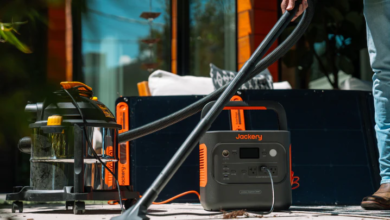
5 Major Difference Between Powder Coating and Paint
Did you know that corrosion can lead to an annual cost of about $2.5 trillion? This issue also increases the risk of equipment failure, leading to catastrophic accidents and costly lawsuits for business owners.
Coating metallic equipment and devices provide a protective barrier that can prevent corrosion. It also enhances the appearance of the surface by providing a smooth finish.
Painting and powder coating are ideal finishing solutions for metal surfaces. These can extend products’ lifespan and allow your clients to get more returns on their investments.
Are you wondering about the differences between painting and powder coating? Read on to discover five critical disparities between the industrial finishing solutions.
Table of Contents
1. The Composition
The critical difference between powder coats and paints is the compositions. Paints consist of four main substances: a solvent, binder, pigment, and additives. The binder holds the pigment particles together to create a paint film. The solvent then dissolves the pigment and binding agent to ease application.
After learning the composition of paints, you may wonder- ‘What is powder coating? ‘ Powder coats mainly consist of polymer resin and pigments. Unlike paints, they don’t contain volatile solvents. Hence, they are more environmentally friendly and don’t leave an acrid smell.
2. Application
The application process of paint and powder coating differ significantly. When painting a surface, you will prepare it and then use a brush, roller or sprayer to distribute the paint. You may then add more layers based on the thickness and the look you want to achieve.
On the other hand, powder coating involves pretreating the surface and placing it in a coating booth. You can also use a powder coating gun from reliantfinishingsystems.com if you are working on a small surface.
Coating booths and guns will produce electrically charged particles that adhere to the surface. You may then complete the process by baking and curing the surface in a powder coat oven.
Since powder coating is more complex than painting, it’s advisable to avoid do-it-yourself (DIY) projects. Instead, hire a professional that understands how to powder coat different materials.
3. Flexibility
Another difference between paint and powder coating is that the latter is more flexible. Unlike powder coating, paint cracks and chips after the solvent evaporates. Hence, it’s not suitable for surfaces subject to regular temperature changes.
Powder coating achieves a smooth coat even on areas with many bends or creases. Due to this aspect, you can use it on many surfaces than paint.
4. Color Matching
Paint offers a broad range of color options since you can combine different primary hues. On the other hand, powder coat colors are fewer as the substance doesn’t dissolve.
With regular paint, you can achieve many shades from different mixtures. However, you can only use the colors available on the market with powder coating.
5. Cost
Paint is affordable and available in varying price ranges based on quality and durability. In contrast, powder coating is relatively more expensive than many paint options.
Still, powders are highly durable and don’t fade quickly like paint. Powder coats also don’t chip, which reduces the need for frequent removal and reapplication.
Choose Between Powder Coating and Paint
Powder coating and paint have unique compositions making them ideal for varying uses. Still, the first option has many benefits and is cost-effective in the long run.
Offering professional powder coating services will give your clients value for their money and protect their equipment. If you would like to read more informative blogs, browse this page.








